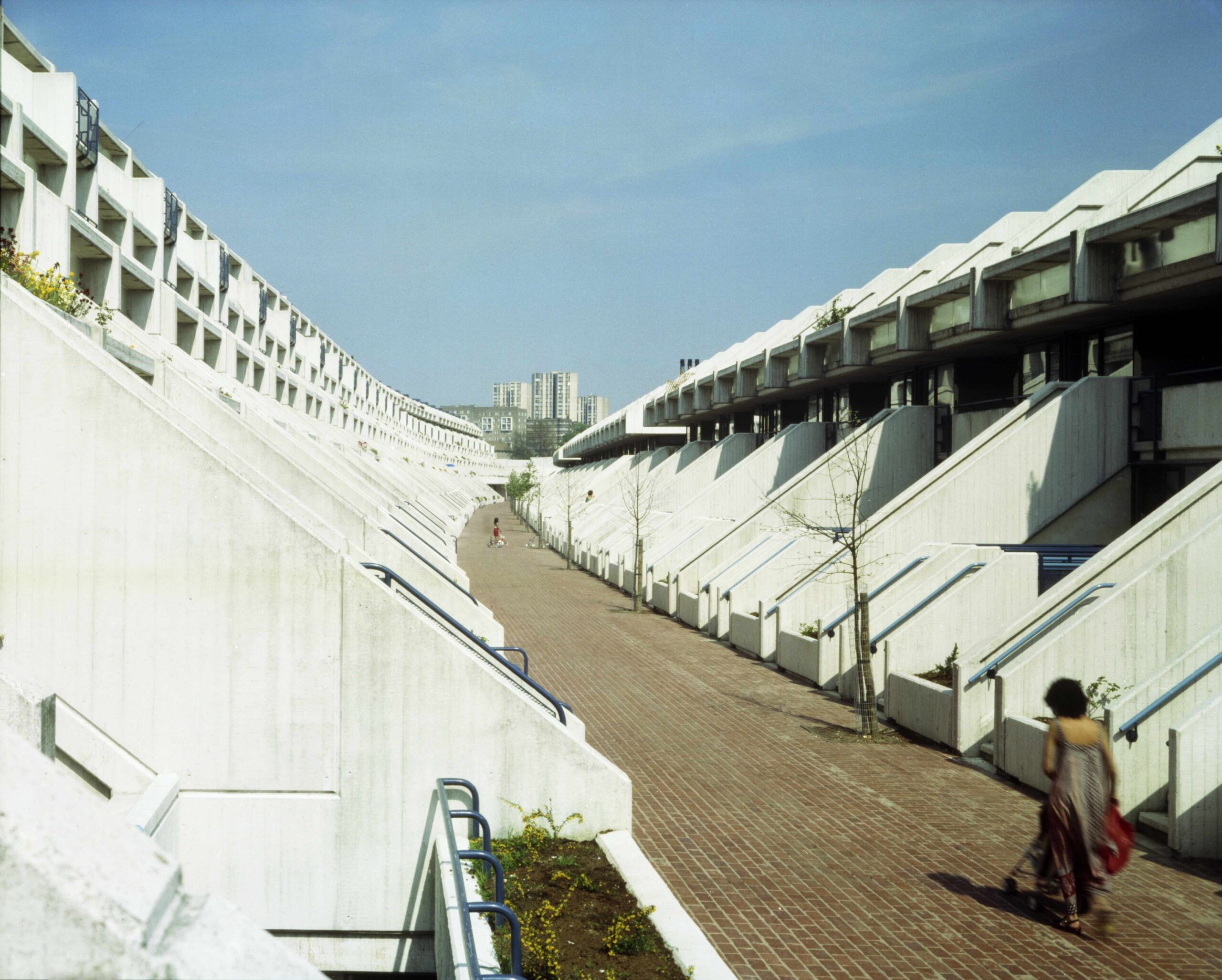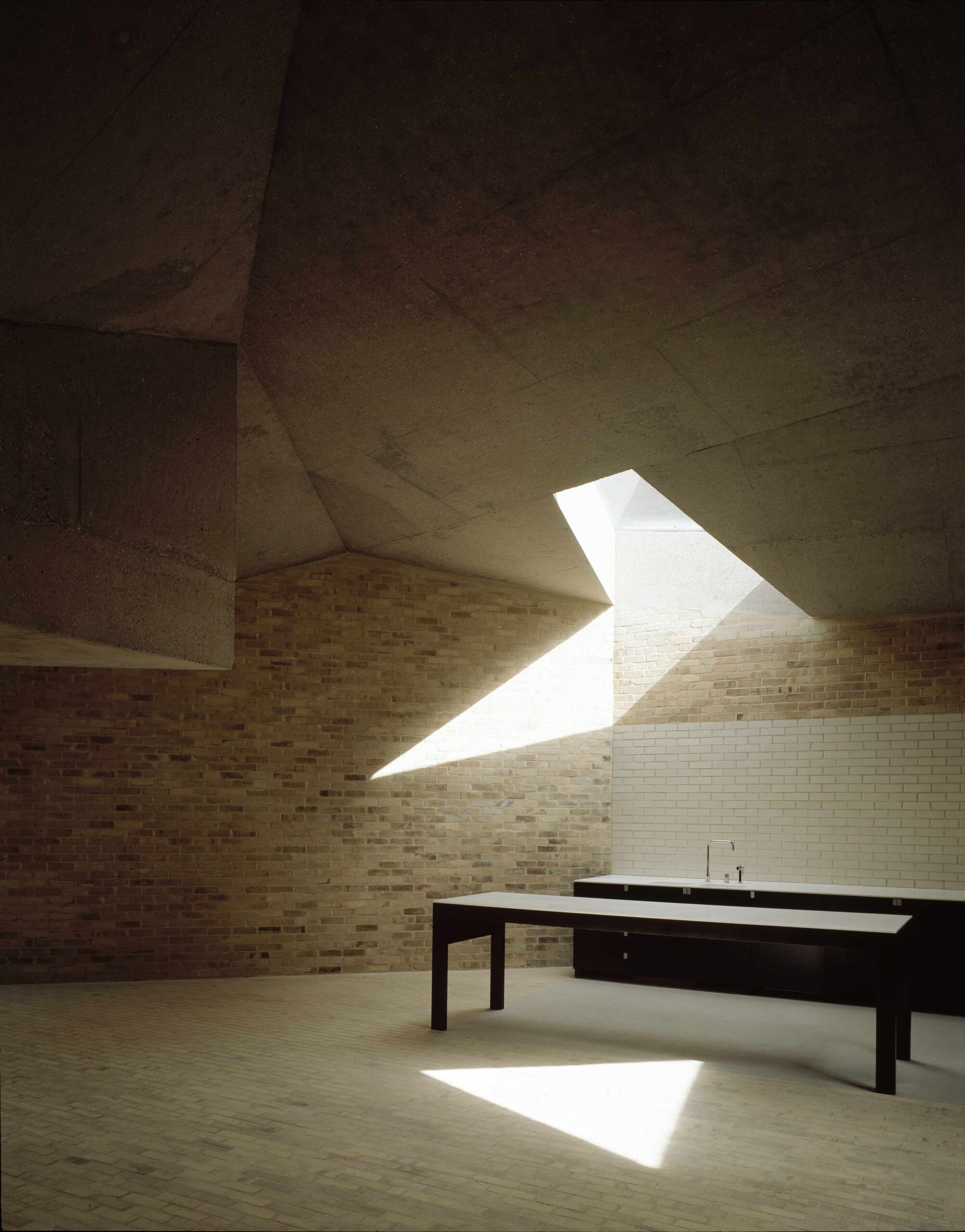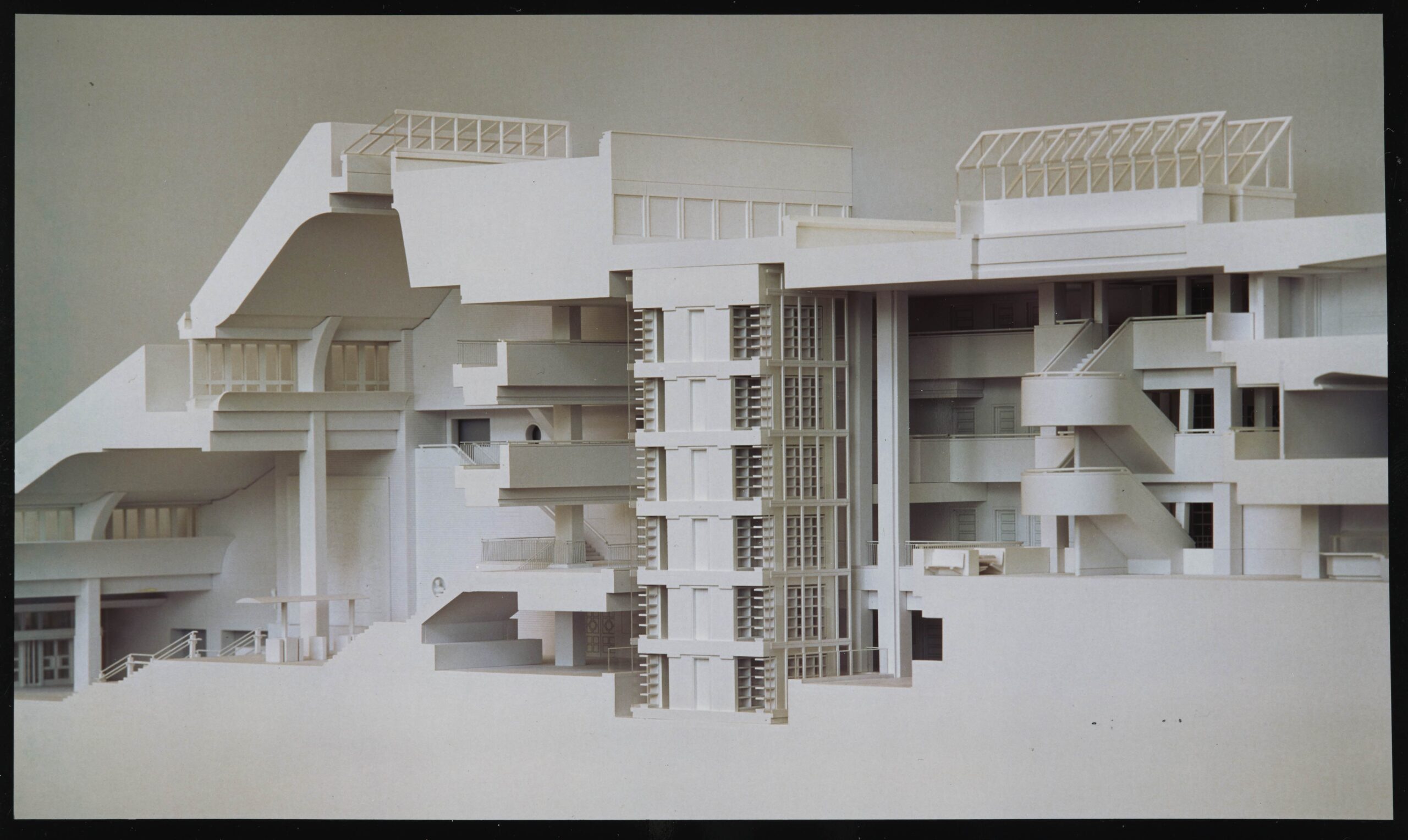Planning sagas, sterile pits, flood zones, and tiny plots are just some of the battlegrounds featured in a new exhibition at RIBA looking at over 20 projects that have triumphed against unyielding sites and conditions
 Photography by Martin Charles, RIBA Collections, featuring Alexandra Road Estate, Camden, London, looking north-east along the pedestrian street between blocks A and B
Photography by Martin Charles, RIBA Collections, featuring Alexandra Road Estate, Camden, London, looking north-east along the pedestrian street between blocks A and B
Words by Joe Lloyd
When Basil Spence published his design for a new Coventry Cathedral, replacing that destroyed in World War Two, he triggered an immense controversy. Hundreds of letters were fired at the architect and his client. They were accused of ignoring the ruined cathedral’s mediaeval heritage in favour of an uncompromising modernism (although The Architects’ Journal felt Spence’s style was already outdated). Yet this was only the start of Spence’s problems. His winning competition design was deemed too expensive and had to be revised. Arup added further revisions. Costs continued to spiral. At times, the building looked threatened. But perhaps worst of all was the site itself: Spence’s plan for the new church required carefully integrating the shell of the ruined one. It was a nightmare site. That it was built at all is remarkable.
Architectural history is laden with such tales. Difficult Sites: Architecture Against the Odds, a new exhibition at RIBA, explores buildings across Britain that have been shaped by vexatious settings. It includes cultural and commercial centres, houses and housing estates, restorations and re-imaginings. The show spans early 20th century masterpieces such as Charles Holden’s 55 Broadway, controversial monuments like the National Gallery’s Sainsbury Wing, and acclaimed projects from the last few decades, including Carmody Groarke’s Windermere Jetty Museum and Mary Arnold-Forster’s larch-clad Need in the Scottish Highlights. It gathers models, drawings, photography and plans to depict these projects, many of which achieved the apparently impossible. In doing so, they expanded architecture’s ambit.
 Photography by Helene Binet featuring Brick House, Caruso St. John, interior
Photography by Helene Binet featuring Brick House, Caruso St. John, interior
The exhibition highlights three particular genres of difficult projects. Difficult Landscapes looks at those buildings constructed on sites with complex topographies and geologies. They include dramatically situated structures like Team 4’s debut work Creek Vean House, perched precipitously atop a sleep Cornish riverbank. Others sit on uneven surfaces, like Stonewall, Ernest Gimson’s influential Arts and Crafts house in Leicestershire, a building whose seamless appearance belies the difficulty of its construction. On a far larger scale, Nicholas Grimshaw’s Eden Project sits on a reclaimed China clay pit. Engineers had to stabilise the sides of this quarry using 2,000 11m-long rock anchors. It remains a tricky prospect. In 2020, it was temporarily closed after landslips caused by heavy rain.
Difficult Urban Spaces covers buildings at the mercy of the complex layer of ownerships, stakeholders and pre-existing structures that make up the modern metropolis. The award- winning 28 and a half Lansdowne Crescent, designed by Jeremy Lever in 1973, was squeezed into a 13ft wedge between its Victorian neighbours yet somehow manages to remain spacious and light filled. Neave Brown’s now-iconic Alexandra Road Estate in South Hampstead, celebrated for its stepped gardens and curving thoroughfare, owes its form in part due to being squeezed along the Euston main line. And Colin St John Wilson’s unique British Library, plonked atop a former good yard in Somers Town, was built to match a range of restrictions from Camden Council, while at the same time negotiating the physical constraints caused by the Northern and Victoria lines that run beneath. The original plan for the library would have instead involved demolishing a swathe of Victorian Bloomsbury.
 Photography courtesy of RIBA, featuring British Library, 96 Euston Road, St Pancras, London: section model
Photography courtesy of RIBA, featuring British Library, 96 Euston Road, St Pancras, London: section model
Britain has a rich architectural heritage, and the third focused section, Difficult Reworkings, looks at the projects that negotiate historical buildings. The Weston Tower at Westminster Abbey, designed by Ptolemy Dean and opened in 2018, allows visitors to access the church’s triforium. It is the first addition to the Abbey since Nicholas Hawksmoor’s west towers in the mid-18th century. The Guardian called it “a gothic space rocket to a secret realm”. Astley Castle in Warwickshire is a contemporary dwelling nestled within the sandstone walls of a Grade II*-listed 16th century manor house. Witherford Watson Mann Architects’s 2013 reconstruction won the 2013 Stirling Prize. The Manga Science Adventure Centre Rotherham, which won the same prize in 2001, is a pioneering instance of reusing a closed-up industrial site. Wilkinson Eyre Architects, Mott MacDonald and Buro Happold transformed the Steel, Peech and Tozer steelworks — itself located above a Roman fort — into an interactive museum and event space.
RIBA intends Difficult Sites to serve as a source of inspiration for practitioners. Undercroft Architect’s Archway Studios, for instance, a live-workspace that bulges out from a Camberwell railway arch, presents a model that can be ported to other similar sites. Knox Bhavan’s March House, along the Thames near Marlow, shows how clever buildings can prevent flooding. ‘These projects and their architects,’ writes RIBA president Muyiwa Oki, ‘push the boundaries of what architecture can achieve. As environments become more changeable and the needs of societies grow and evolve, navigating challenging sites will become ever more important for architects and clients.’ Denser cities, landscapes altered by climate change, the drive to conserve nature and heritage versus the need to provide for more people: today’s architects have it hard. Difficult Sites shows that fascinating architects can emerge from the greatest of contrasts.
Difficult Sites: Architecture Against the Odds is a free exhibition at RIBA, 66 Portland Place, London. It runs from 11 October 2024 – 29 March 2025
Get a curated collection of design and architecture news in your inbox by signing up to our ICON Weekly newsletter

















